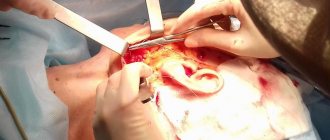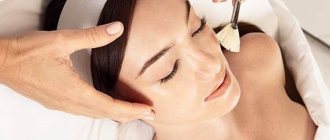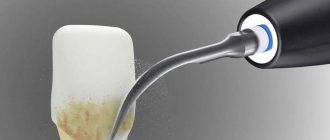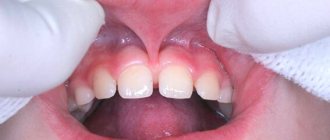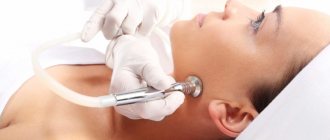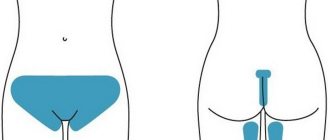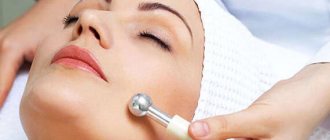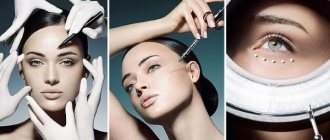You can perforate not only material for bags, shoes or car interior trim, but also the skin of a living person. This is a cosmetic procedure called microneedling.
Thousands of holes are made on the face or body using needles. These are real wounds from which emerges, as cosmetologists tenderly and poetically call it, “blood dew” (although in this case the image of “meat chop” is more appropriate). Supposedly, in this way, defects (scars, post-acne, stretch marks) are erased, and rejuvenation occurs, the skin is tightened and smoothed.
What actually stands behind this fashionable aggressive procedure? We tell you the whole truth that cosmetologists are silent about.
What is microneedling
Microneedling is a relatively young but popular trend in cosmetology. You can also find the names “skin needling”, “mesonidling”, “micro-needling therapy”, “collagen-inducing therapy”, “fractional mesotherapy” - they all mean the same thing.
The essence of the procedure is that the skin is pierced with needles. The density of damage caused is very high: per 1 square centimeter there are several dozen wound holes.
The procedure is done using:
- mesoscooter
- a roller with a handle on which 100-200 needles are located, - dermastamp/dermapen
- pens with a needle tip, which automatically puts bloody “stamps” on the skin. - Sometimes they also use a permanent makeup machine
with special modules.
Why turn your skin into a bloody sieve? It is stated that this will make it tighten, become smoother and more elastic, and defects will be eliminated.
Microneedling was discovered at the very end of the 20th century. Then doctors noticed that surgical scars become less noticeable if they are treated with a tattoo gun without ink. This observation prompted the development of the needle roller for scar correction.
Soon the scope of application of the new tool expanded, and they began to fight a variety of imperfections: wrinkles, sagging skin, sagging ovals, cellulite, post-acne, stretch marks, etc.
The procedure became truly fashionable a few years ago, when Kim Kardashian posted a photo of herself online with a “bloody mess” instead of her face. This was her after the microneedling procedure. And her followers wanted the same.
Reviews from cosmetologists
The attitude of practicing cosmetologists to this technique differs. One part constantly uses mesoscooters in their practice. Others tried and for some reason refused to use this device. And the third group never intends to use them in their sessions.
Such contradictory statements by professionals are due to the fact that the application is accompanied by its positive and negative sides of the process. In addition, this procedure is not irreplaceable.
In modern cosmetology, there are many methods that will allow, in response to your actions, to launch the restorative properties of the skin. Hardware methods for creating punctures in the skin are also used.
Characteristics of the procedure
Microneedling is similar to mesotherapy, biorevitalization, plasma lifting. Only, unlike injection techniques, even more punctures are made here. Uncountable number. Which means even more damage. The face is literally rolled out (roller) or stamped (stamp) with needles. Several thousand (!) wound holes are created on the skin per minute.
In general, “needling” is translated as “piercing/cutting with a needle,” “punching a hole.”
But how “micro” is it? After all, the needles penetrate to a depth of 2-3 mm, that is, they damage not only the top layer of skin (epidermis), but also the one that lies behind it - the dermis. And here there are already blood vessels (unlike the epidermis), and also an abundance of nerves. Not at all suitable for light, superficial acupuncture.
The “micro” characteristic in relation to such a procedure is applicable only to reassure patients. The wounds are real, deep and multiple.
By the way, in microneedling the depth of penetration of needles is usually comparable to mesotherapy, biorevitalization, and plasma lifting. A deeper effect in such injection techniques also occurs, but rarely.
Microneedling is typically applied to the face. Even the most delicate skin around the eyes is not spared. It is also possible to “perforate” the neck, décolleté, arms, thighs, abdomen, buttocks and even the scalp (to enhance hair growth).
The procedure can be performed on clean, untreated skin. But usually some kind of serum/gel/cream with various popular “youth” ingredients is applied to the face: antioxidants, hyaluronic acid, collagen, amino acids, vitamins, lactic acid, etc. The punctures create channels for transporting the cosmetic product deeper into the skin.
Contraindications
Despite the overall simplicity and safety of the cosmetological method, there are a number of contraindications that are important to consider when scheduling sessions.
It is not recommended to carry out the procedure:
- during pregnancy, during the lactation period;
- presence of autoimmune diseases;
- with a tendency to scarring;
- for epilepsy, diabetes mellitus in the decompensation stage;
- blood clotting disorders;
- long-term use of anticoagulants, antiplatelet agents;
- acute infections, herpes;
- chronic diseases in the acute stage;
- malignant formations;
- mechanical skin damage in the treatment area;
- pronounced rosacea, accumulation of moles, papillomas, keratomas in the area of mesotherapy.
To avoid negative consequences, in the presence of temporary or general contraindications, the procedure is strictly not recommended.
Action and effect of microneedling
How does it all work?
First, let's see what cosmetologists promise.
According to them, microneedling has an extremely beneficial effect on the skin. It stimulates the production of collagen and elastin - regeneration processes are launched, the skin is renewed and rejuvenated.
As a result:
- wrinkles and folds are reduced,
- the oval is tightened, the double chin is reduced,
- skin elasticity and tone increases,
- the microrelief is leveled, scars, cicatrices, stretch marks, acne marks are eliminated,
- skin color improves, age spots are erased,
- cellulite and varicose veins are reduced,
- sagging on the stomach, thighs, arms is reduced,
- hair follicles are stimulated.
Why does this “miracle” happen, and does it happen at all?
Not all cosmetologists go into detail about the mechanism of action of microneedling (they need to sell the procedure, and not alienate the clientele). Most likely, the salon will get off with general words about the benefits of “acupuncture” (although microneedling is not acupuncture, but acupuncture, acupuncture). They will focus on the fact that the procedure paves the way for “rejuvenating” drugs deep into the skin, and it is they that work so “wonderfully”.
But all these explanations are tinsel. The truth is that needles completely injure the skin. The face turns into one continuous wound.
Yes, cosmetologists admit that the skin is damaged. But they talk about it as a controlled and beneficial process. The damage is supposedly “minor” (“micro”). And in general, according to the gentle version, “the needles do not create a wound in the real sense, but rather, the skin cells are “deceived” into believing that an injury has occurred” (how is that even true?).
The rest of the logic is predictable. Thanks to injuries (which seem to be not injuries), we get the migration of fibroblasts to the site of injury and increased production of the desired collagen - the main structural protein of the dermis.
This is the version that reaches the masses.
What's really going on?
Injuries are widespread and total. Skin under stress. The body is forced to react to this by actively synthesizing new protein fibers - they are needed to “patch up” wounds.
Only this is not the protein that makes the skin young and elastic, and which we all dream about. No. This is a different collagen, fibrous. It has coarse and uneven fibers. It actually covers the face with a web of deep scars.
In addition, swelling is inevitable. What else can you do with injuries and inflammations? The body will definitely react to aggression.
With such an attack, it no longer plays a special role whether any serums were applied to the skin or not. It is not they who work, but total perforation of the skin. What happens? All that the skin has “renewed” is scars and swelling. They give the appearance of tightening and leveling the microrelief, because the skin has now become denser, rougher and more voluminous.
But this is an illusory and short-term effect. In fact, the skin has not rejuvenated, but only aged.
Mechanism of action on the skin
The method affects different layers of the skin, according to a specific mechanism:
- After puncture of the skin with a microneedle of a mesoscooter, platelets are activated, releasing protein from growth factors. Stimulation of proliferation—cell division—occurs.
- Since punctures are performed instantly, active biological substances are quickly delivered to the skin. It is necessary to deliver the vitamin cocktail to the tissues and cells until the wounds and opened tubules close.
- After the session, within 1-3 days, the regeneration process starts. The inflammation that occurs after a puncture stimulates active healing, triggering all natural processes. The vascular network is strengthened, elastin and collagen fibers of hyaluronic acid are synthesized.
- After regeneration, the process of granulation begins - the formation of new tissues on the damaged surface, neocollagenesis, restoration of basement membranes.
- The final stage of the mechanism is plastic. It can last from 2 weeks to 2 years. Type 1 collagen is synthesized, replacing type 3 and 4 collagen. Type 1 substance forms a more durable frame, enhancing local immunity, helping to strengthen and improve the structure of the epidermis.
How long does the effect last after microneedling?
Cosmetologists claim that just one procedure will transform your face. And for a pronounced rejuvenating effect, a course of 5-7 sessions is needed.
The frequency of procedures is on average 1 time per week (can reach 1 month when working with needles of maximum length).
The effect of microneedling is promised to last 6-12 months. Accordingly, as soon as it subsides, it is suggested to visit the cosmetologist again. And so all my life. The “needles” are used in the same way as any injection technique.
Why? Because microneedling does not rejuvenate anything, but only accelerates aging. A few months after the course of procedures (sometimes a few days later), you will see in the mirror a face that has aged 5-10 years.
After all, all this time negative processes were occurring inside the skin. They were launched when your face was turned into a “sieve.”
- The intercellular space was constrained by scars.
- This interfered with the delivery of nutrients and oxygen to the cells. The cells did not live normally, did not breathe.
- The outflow of tissue fluid was inhibited. This means that toxins and decay products poisoned the body, and swelling created a load on the tissues.
The skin just became decrepit.
Don't believe those who say microneedling helps improve blood circulation and lymphatic drainage. It's the other way around.
What's the result? Everything you were struggling with got worse, and new problems were added. The color became gray and uneven, wrinkles and sagging intensified, the oval “swimmed away”, crow’s feet, nasolabial lips, double chin became more pronounced...
You ran to the cosmetologist in tears to get new “holes” and again briefly received the illusion of youth. Only from time to time the effect will be less and less, and old age will come much faster.
How is microneedling done?
Curious about the procedure?
So, there is a mesoscooter and there is a dermostamp (dermapen).
- Mesoscooter
contains 200-500 needles. They literally roll out the skin, turning it into a “holey sheet”. The needles have different entry and exit angles.Depending on the problem and the area being treated, nozzles with short, medium or long needles are selected. For example, short needles are used for the skin around the eyes, long needles are used for the cheeks and nasolabial folds.
It is convenient to use a mesoscooter to treat large areas: thighs, buttocks, abdomen.
- In the case of work dermapen
the skin is stretched. And the device itself puts “stamps” (the device is automatic). Dermapen needles enter the skin at an angle of 90° and under the same pressure. Either the Step by Step technique or the linear technique is used (the latter allows you to remove the top layer of skin and is similar to dermabrasion).It is easier to treat hard-to-reach places with Dermopen, for example, the wings of the nose, the periorbital area, nasolabial folds, and the post-auricular cavity. The length of the needles can be adjusted on one cartridge (no need to change the nozzle).
What else do you need to know about the procedure? Microneedling is torture with pain.
Needles can still be tolerated if the skin is pierced by about half a millimeter. But usually there is a deeper impact. And when the depth of penetration of the needles reaches 1-1.5 mm, it hurts to the point of tears. And this is not the limit.
It’s hard to imagine what women experience when their faces are pierced 2-3 mm deep at the same time with dozens and hundreds of needles! No anesthetic can help. Many then simply do not dare to come for a repeat procedure.
Device overview
There are two types of microneedling devices on sale: mesoscooters and dermapens.
A mesoscooter is a roller with needles. To obtain a positive result, there must be more than 500 needles. Devices with removable and static rollers are sold. It is more economical to buy a roller with a removable roller and replace it during the next course.
Pros of a mesoscooter:
- Low price. A suitable tool can be bought for 1000 rubles.
- The purchase of the roller is carried out by the client himself, since this is a personal thing.
- It is possible to sterilize needles. After disinfection, reuse is possible.
Disadvantages of a mesoscooter.
- There is a risk of infection due to poor sterilization.
- Insufficient puncture uniformity.
Among the brands, the most famous are BioGenesys DNS London, Bradex, Mesoderm, Bodyton, Gezatone, Welss.
Dermapen is a tool similar to an automatic pen with a replaceable attachment. The principle of operation is similar to an autolancet for collecting blood. The number of needles is significantly less, but this is balanced by the fast operation of the head. The number of punctures for fractional dermapen ranges from 1500 to 7000 injections.
The device has replaceable attachments and lasts about 7 years.
The cost of one nozzle, compared to rollers, is small.
Pros of Dermapen:
- The uniformity of punctures is higher due to automatic operation.
- There is no risk of infection since the attachments are changed for each client.
- The device can be used repeatedly.
Cons of Dermapen:
- The devices are expensive. The cost reaches 9000.
- Failure to sterilize needles results in increased maintenance costs.
The most popular manufacturers: Dr.Pen, My-M, MESODERM, YYR.
Stages of microneedling
- The skin is cleansed and disinfected. An anesthetic cream is applied. Local anesthetic is not used for very short needles (0.25 mm) or is used optionally if the needle length reaches 1 mm.
- A “rejuvenating” serum/cream/gel is applied. The procedure may not include this step.
- The skin is “perforated” with a mesoscooter or dermostamp.
- The skin is treated with disinfectants, soothing and healing agents. These can be creams, masks, gel dressings, etc.
Rehabilitation after the procedure
Cosmetologists promise that rehabilitation will take no more than a day. During this time, redness and swelling should subside.
In fact, the marks can last for several days. Bruising, lacerations, peeling, irritation - all this occurs more often than we would like.
There are cases when, after the procedure, the face became covered with age spots, scars, rosacea (“rosacea”), and terrible erythema (intense redness).
Here are some quotes from reviews from women who have had microneedling done:
- “On day 6, the face looks terrible, like it’s burned.”
- “The skin peels off in chunks, giving a mottled effect.”
- “After 2 procedures I look like Frankenstein and have added 10 years to my age.”
And we are not even talking about the fact that the patient risks getting an infection (there are thousands of gates for this), getting skin inflammation and more severe complications.
Why all this? Because the very principle of microneedling is wrong, going against physiology. Although the occurrence of side effects may be partly due to non-compliance with the rules of behavior after the procedure.
What restrictions must be followed after microneedling:
- Don't wear makeup for 24 hours.
- Avoid direct sunlight for 10 days and apply sunscreen with an SPF of at least 35.
- Do not visit baths and saunas for 5 days.
- Do not use cosmetics that contain alcohol, acids, or scrubbing elements for 14 days.
Possible complications
Since microneedling is a minimally invasive procedure, the roller has a gentle effect on the tissues and cells of the epidermis.
Still, it is worth remembering that the mechanism involves punctures of the skin, this can lead to negative consequences:
- If septic measures are not followed, there is a risk of infection, but its probability is low.
- The procedure can cause redness, this is how the blood vessels react to the injections. The reaction takes place within 1-2 hours after the session.
- Swelling. This phenomenon can occur after microneedling and persist throughout the day. Severe swelling is typical after procedures using hyaluronic acid, since the main property of the substance is to attract and retain water molecules.
- Point hemorrhages, hematomas. They can occur with increased fragility of blood vessels, if the procedure is carried out during menstruation, as well as when taking aspirin, drugs based on Ginko Biloba, vitamin E.
- Vagal syndrome, accompanied by slight dizziness and cooling of the extremities. This side effect is associated with irritation of the vagus nerve, as well as as a reaction to pain.
One of the negative manifestations of microneedling is pain of varying severity. They can occur due to increased sensitivity or incorrectly chosen technology for administering cocktails (intensity, depth of injection, needle size).
Microneedling at home
There are several rules for using a mesoscooter at home:
- The instrument can only be used within the expiration date, that is, up to six months. After this, the needles become dull and can injure the skin.
- Each time before and after the procedure, the device must be disinfected.
- It is necessary to achieve perfect cleanliness on the work surface. Hands should be treated with an antiseptic; it is better to work with disposable gloves.
- Do not apply open serums or creams to the skin that have already been used or taken out of the jar with your fingers. These are no longer sterile products.
- You cannot use professional mesoscooters at home - with needles longer than 1 mm. After all, they violate the integrity of the skin, and such procedures require complete sterility. It is achievable only in beauty salons, and even then not always.
You should be wary if mesoscooters with needle lengths of 1 mm or more are sold in the public domain. These are professional tools and can only be sold to licensed clinics. The presence of such rollerballs for free sale is a reason to doubt the manufacturer.
Only the subcision method can effectively remove acne scars on the face.
Maxim Vasiliev’s method against acne scars is based on the subcision method - a special microtechnique for cutting scars. This method was first used in 1995 and works great even against the most old and deep atrophic scars.
Subcision is a painstaking method of correcting atrophic post-acne scars.
Subcision is performed under local anesthesia using a powerful microscope. Using a sterile syringe needle, the surgeon carefully and quickly cuts the so-called “strands” - separating the scar tissue from neighboring structures. The skin, which is no longer held in place, rises and straightens.
